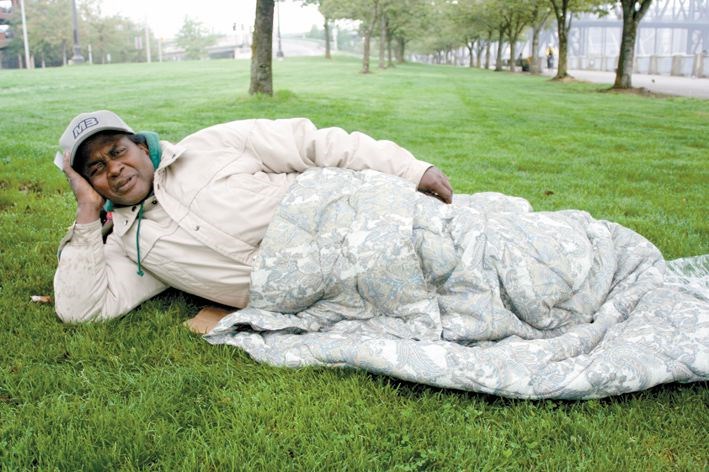Editor's note: A dozen people from Prince George, including city councillors and Citizen reporter Mark Nielsen went to Portland, Oregon in October 2008 to learn how that city was dealing with the homeless and downtown revitalization. With the city's downtown task force set to get to work in the new year, here are Mark's stories from that trip.
PORTLAND, ORE. -- End homelessness in 10 years?
It may sound a little lofty, but that's exactly what the City of Portland and Multnomah County have in mind. In 2005 they launched a strategy to end homelessness by 2015.
Homelessness was a relatively rare phenomenon until the 1980s, when many economic and social changes converged to cause its dramatic rise. By 2005, about 4,000 people slept in streets, in cars or in shelters across Portland on any given night and nearly 17,000 had suffered bouts of homeless over the previous year.
The vast majority were "transitional" homeless, individuals and families forced out onto the streets by economic circumstances for a short term. But an estimated 20 per cent were "episodic" who went through multiple episodes or "chronic," defined as those who experienced homelessness for a year or longer.
What's more, they put a strain on the city's policing and health systems not to mention create a nuisance for shoppers and other passersby, particularly in the downtown Portland where most of them tended to congregate. It was estimated that a chronically homeless person cost about $40,440 a year in public resources and if moved into permanent supportive housing, the cost would fall to $28,118.
Figures like that sparked a nationwide push for more housing and cities across the U.S. began to develop 10-year plans to secure funding, primarily from the U.S. Department of Housing and Urban Development (HUD), in the name of providing the homeless stable housing first and then work on the issues that put them onto the streets and into the emergency shelters in the first place.
So far, Portland's effort has not only met but greatly exceeded expectations. By the end of 2007, homes had been found for 1,286 chronically homeless and 1,681 families, meeting 135 per cent and 224 per cent of the targets respectively. What's more, 1,008 units of supportive housing had been either opened or in the development pipeline -- nearly halfway towards the goal of 2,200 by 2015.
The pace continued for the first half of 2008, but Sally Erickson, manager of the city's homeless program, is starting to worry.
Speaking to a contingent from Prince George currently in this city of 570,000 people to look at the effort, Erickson said rental assistance combined with a high vacancy rate was a big reason for the success so far. It was not long ago, she said, when landlord were putting balloons on their for rent signs and offering a month's free rent to attract tenants to their buildings.
But now the vacancy rate has dropped to three per cent and rent has increased, particularly in the fashionable Pearl District on the northwest edge of the downtown, where warehouses have been converted into lofts, condominiums and trendy restaurants. Added to Erickson's concerns, with the a mortgage-led recession emerging in the U.S., the number of homeless can only get larger at least over the short term.
However, with enough support from the federal government in particular, Erickson remains hopeful that lofty goal of ending homelessness by 2015 will be reached.

.png;w=120;h=80;mode=crop)

